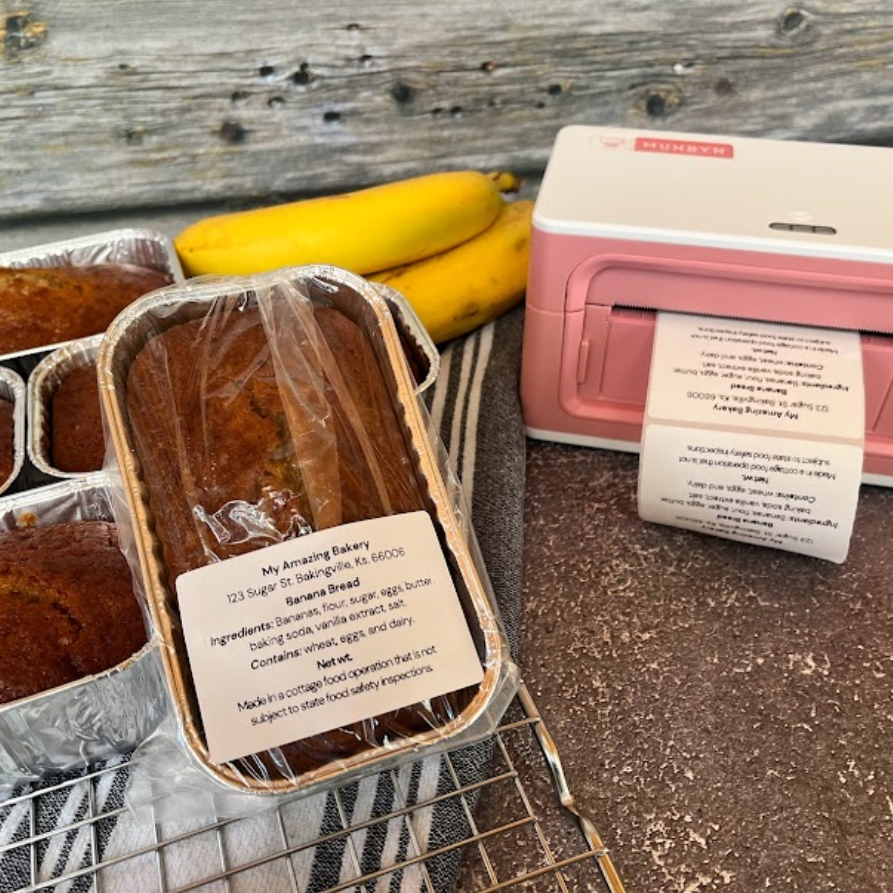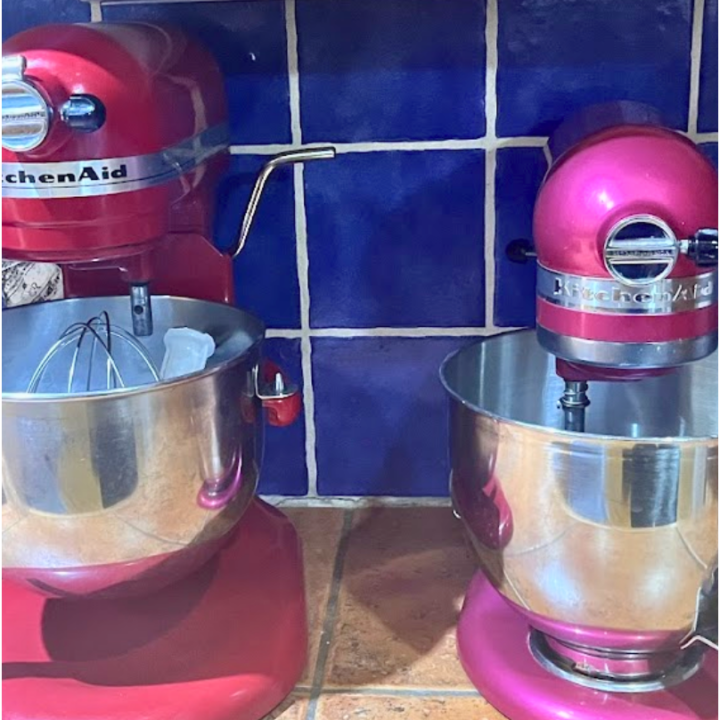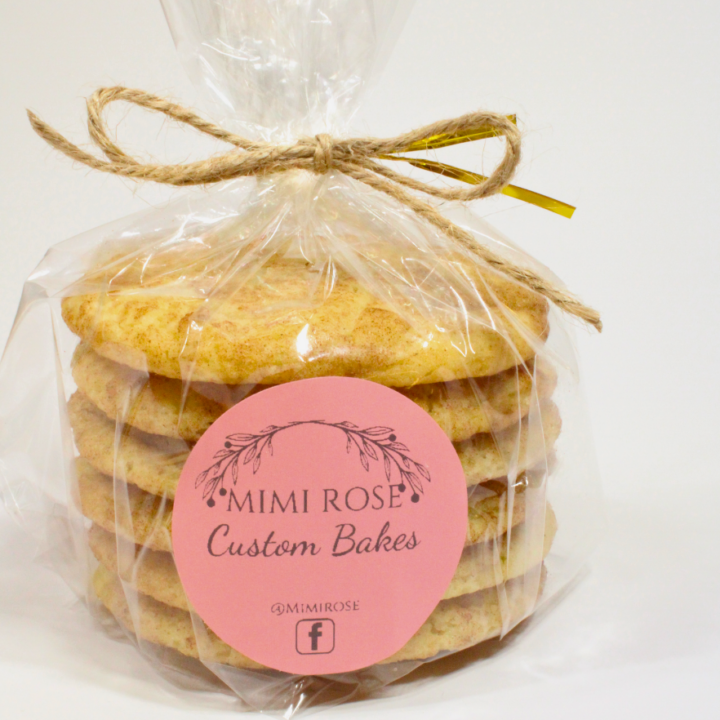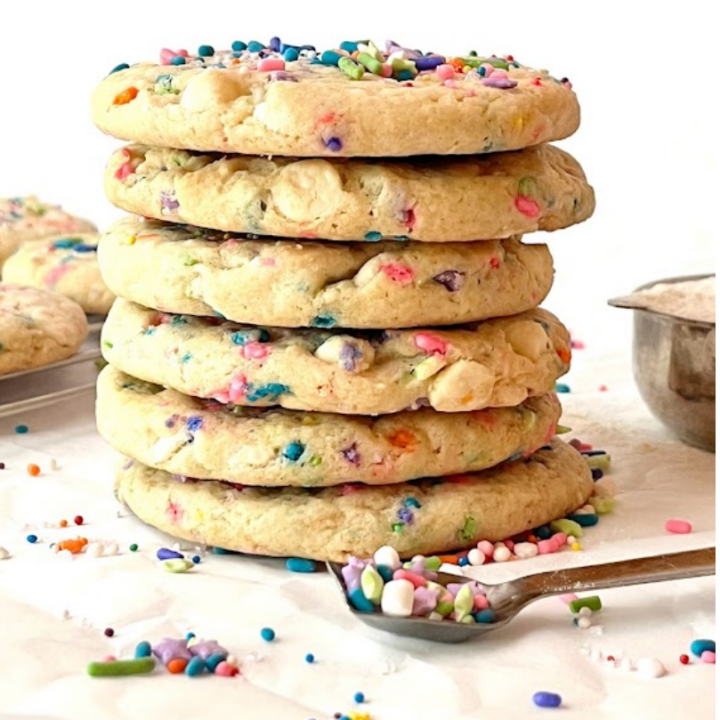Are you confused by your state cottage foods label requirements?
In this post, you'll find helpful information about United States cottage food labeling requirements and a state-by-state resource for cottage foods laws that will help you when it comes to labeling your cottage foods products.

Bakers who want to sell homemade products made in their home kitchen need to know the cottage food law for their state. If you qualify as a cottage food operation or a home-based food business, you can sell anything from wedding cakes, sweet breads, and cookies, to jams and fruit butters.
Click here to read my full post about the best way to print labels at home.
Click here to learn more about selling homemade food at the farmers market.
Disclosure: This post contains affiliate links. I earn commissions when readers purchase items through my sponsored links

What information goes on a cottage food label?
Regardless of your state, you'll probably need to include some basic information on your product labels.
Here is what you may need to include:
- Business name and contact information
- The product name
- The ingredients of the food product
- Disclose that your product was made in a cottage food production operation
- Net weight
- Common food allergens

For specific state information, you can reference the state-by-state list at the bottom of this post.
You can also find out information about cottage food laws such as: whether your items can be sold in grocery stores or retail stores, whether you need to complete any food safety training, whether there is a limit on your gross sales, and if you can have indirect sales or sell by mail order.
Now let's learn about what goes on a cottage foods label!
Cottage Foods Label Requirement #1: Business name and contact information
As a cottage food operator, you may be required to include the following information on your label:
- Business name
- Street address
- City
- State. (and sometimes phone number or email)
If the idea of including your home address on your label worries you, I get it! Hopefully, down the line, labeling requirements will loosen up. For now, check to see if you need to list your primary residence on the label.
Cottage Foods Label Requirement #2: The product name
You may need to include a clear and descriptive product name for your baked goods. This can be a cute, branded name or just the usual name of the product to help identify it.
Cottage Foods Label Requirement #3: The ingredients of the food product
Next, you'll need to disclose all the ingredients of the cottage food product. Most states require your ingredients list to have the food items in descending order of predominance in the recipe.
In other words, list the heaviest ingredients first( the ones you use the most of first), and the lightest ingredient last. (The ones you use the least.)
How to list sub Ingredients on cottage foods labels
Some states may require you to list sub-ingredients (aka compound ingredients) if you use a prepared item in your recipe.
For example: if you use colored sprinkles on your frosted sugar cookies, listing colored sprinkles is not acceptable.
You’ll need to list colored sprinkles (Sugar, Cornstarch, Palm Oil, Palm Kernel Oil, Cocoa, Cocoa Processed With Alkali, Sunflower Lecithin, Dextrin, Confectioner's Glaze, Blue 1 Lake, Yellow 5 Lake, Red 40 Lake, Yellow 6 Lake, Natural and Artificial Flavor, Red 3, Carnauba Wax.)
Munbyn's Bluetooth thermal label printer and 4x6 thermal labels can be used to print long ingredient labels for bakery products.
Check with your state laws below to learn more about your labeling requirements.

Cottage Foods Label Requirement #4:Cottage foods disclosure
In some states, you must disclose that your bakery items were crafted in a cottage food production operation. To learn the exact wording, click your state below to learn more about the special requirements for your state.
Cottage Foods Label Requirement #5:Net weight
You may be asked to clearly state the net weight or volume of your item, following state-specific guidelines for weights and measures. This information helps your customers understand the quantity they are purchasing and is also vital for pricing and portion control.
💡PRO TIP: If you use the same recipe to sell different sizes of similar products, (eg: mini and large banana bread loaves) then you can leave the net weight blank when you print the label and write it in by hand after you package it. This way, you don't have to have multiple food labels for the same recipe.

Cottage Foods Label Requirement #6:Allergen Labeling
If you are required to give an allergen warning, it means that you must identify if any of your ingredients are made from a known allergen.
Foods from the following food groups are considered major food allergens:
- Milk
- Eggs
- Wheat
- Peanuts
- Soybeans
- Sesame
- fish (including shellfish, crab, lobster, or shrimp)
- tree nuts (such as almonds pecans or walnuts)
So if you have an ingredient made from a wheat-based product you have two options:
1. Include the allergen in the ingredient list.
For example a white bread with the following ingredient listing: whole wheat flour, water, salt, and yeast. In this example, the statement whole wheat flour meets the requirement for an allergen warning.
2. Include an allergen statement after the ingredient list. A white bread with the following ingredients whole wheat flour, water, sodium quesinate, salt, and yeast. Contains wheat and milk.
The "contains" statement reflects the major allergens found in the product.
Now that we've reviewed what goes on a cottage foods label, let's take a look at how to print labels at home the easy way.
How to print cottage foods labels at home
When you're starting out, printing labels at home can feel overwhelming. Choosing bakery label printers, finding the right size labels, and staying up on ink supplies can take a lot of time.
Once I started printing my labels with a thermal label printer, I realized how easy it can be!

Munbyn's Bluetooth thermal label printer is the best solution I've found for printing cottage food labels.
Here’s why I love it so much:
- It’s super fast! (72 labels/minute!)
- The high-resolution print features 203 dpi (and is even capable of 300 dpi for higher printing requirements such as Amazon bar codes).
- It’s easy to use! You can connect it to your computer or phone via USB or Bluetooth.
Thermal labels work by changing color when heated and no ink is needed! These labels resist moisture, oils, and temperature changes too!
How to Print a Cottage Foods Label Using The Munbyn
Once you've determined the specific information that you need to include, take the following steps:
- Decide on the type of label you need.
- Customize the label in Canva.
- Download the label as a jpg to your phone.
- Open the Munbyn Print App and select your preferred label size.
- Select "Image" and find the downloaded jpg in your downloads.
- Select the image and resize it to fit your Munbyn label.
- Print your labels!
Click the link below for my Google Doc template for formatting labels with the Munbyn Label App. I’ve included instructions to make custom labels too!
State-by-state list for cottage food businesses
Alabama
Click here to learn about cottage food laws in Alabama.
Alaska
Click here to learn about cottage food laws in Alaska.
Arizona
Click here to learn about cottage food laws in Arizona.
Arkansas
Click here to learn about cottage food laws in Arkansas.
California
Click here to learn about cottage food laws in California.
Colorado
Click here to learn about cottage food laws in Colorado.
Connecticut
Click here to learn about cottage food laws in Connecticut.
Delaware
Click here to learn about cottage food laws in Delaware.
Florida
Click here to learn about cottage food laws in Florida.
Georgia
Click here to learn about cottage food laws in Georgia.
Hawaii
Click here to learn about cottage food laws in Hawaii.
Idaho
Click here to learn about cottage food laws in Idaho.
Illinois
Click here to learn about cottage food laws in Illinois.
Indiana
Click here to learn about cottage food laws in Indiana.
Iowa
Click here to learn about cottage food laws in Iowa.
Kansas
Click here to learn about cottage food laws in Kansas.
Kentucky
Click here to learn about cottage food laws in Kentucky.
Louisiana
Click here to learn about cottage food laws in Louisana.
Maine
Click here to learn about cottage food laws in Maine.
Maryland
Click here to learn about cottage food laws in Maryland.
Massachusetts
Click here to learn about cottage food laws in Massachusetts.
Michigan
Click here to learn about cottage food laws in Michigan.
Minnesota
Click here to learn about cottage food laws in Minnesota.
Mississippi
Click here to learn about cottage food laws in Mississippi.
Missouri
Click here to learn about cottage food lawsin Missouri.
Montana
Click here to learn about cottage food laws in Montana.
Nebraska
Click here to learn about cottage food laws in Nebraska.
Nevada
Click here to learn about cottage food laws in Nevada.
New Hampshire
Click here to learn about cottage food laws in New Hampshire.
New Jersey
Click here to learn about cottage food laws in New Jersey.
New Mexico
Click here to learn about cottage food laws in New Mexico.
New York
Click here to learn about cottage food laws in New York.
North Carolina
Click here to learn about cottage food laws in North Carolina.
North Dakota
Click here to learn about cottage food laws in North Dakota.
Ohio
Click here to learn about cottage food laws in Ohio.
Oklahoma
Click here to learn about cottage food laws in Oklahoma.
Oregon
Click here to learn about cottage food laws in Oregon.
Pennsylvania
Click here to learn about cottage food laws in Pennsylvania.
Rhode Island
Click here to learn about cottage food laws in Rhode Island.
South Carolina
Click here to learn about cottage food laws in South Carolina.
South Dakota
Click here to learn about cottage food laws in South Dakota.
Tennessee
Click here to learn about cottage food laws in Tennessee.
Texas
Click here to learn about cottage food laws in Texas.
Utah
Click here to learn about cottage foods label requirements in Utah.
Vermont
Click here to learn about cottage foods label requirements in Vermont.
Virginia
Click here to learn about cottage foods label requirements in Virginia.
Washington
Click here to learn about cottage foods label requirements in Washington.
West Virginia
Click here to learn about cottage foods label requirements in West Virginia.
Wisconsin
Click here to learn about cottage foods label requirements in Wisconsin.
Wyoming
Click here to learn about cottage foods label requirements in Wyoming.

I love sharing valuable information on different ways to print custom bakery labels. Let me know in the comments if you have found this article helpful!





Julie Einhorn says
How do you figure how much money you should charge to purchase your baked goods?
It may be a cookie bar, pie cake, etc.